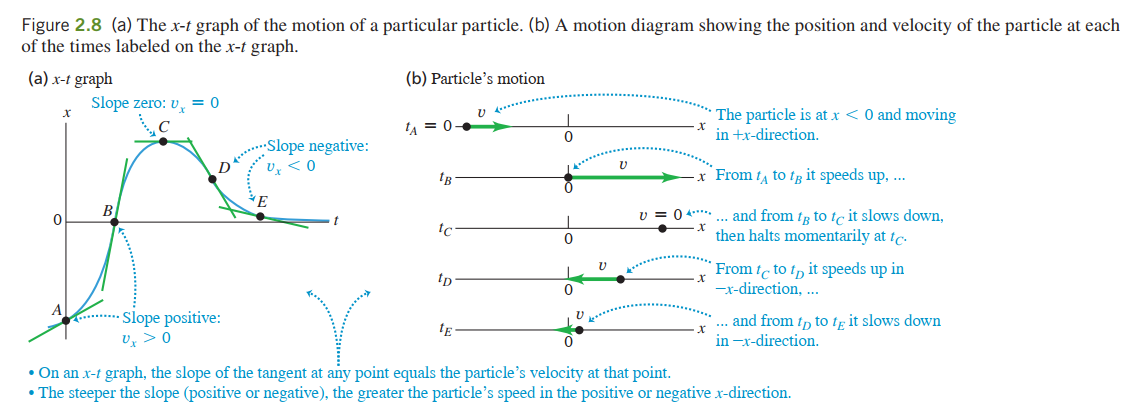$\text{Slope= tan(angle with respect to positive X-axis)= scalar output}$
$\text{velocity= a vector }$
Source: Hugh D Young_ Roger A Freedman - University Physics with Modern Physics In SI Units (2019, Pearson) Page-67
Then, doubts are;
1.Is the relation "Slope of tangent=instantaneous x-velocity" valid, as it would mean "scalar=vector"?
2.Even if I write "Slope of tangent=instantaneous x-speed", if the tangent makes obtuse angle slope will be negative, and we know that instantaneous speed is magnitude of instantaneous velocity, which makes instantaneous speed a positive term. So, what exactly does the slope give?
Source: Hugh D Young_ Roger A Freedman - University Physics with Modern Physics In SI Units (2019, Pearson) Page-67
Similar confusion arises in,$\text{ "Area under a x-t graph = change in x-velocity from time 0 to time t"}$, with right hand side vector and left hand side (area) as scalar. I think answer to the original question, provides solution to this confusion as well.


